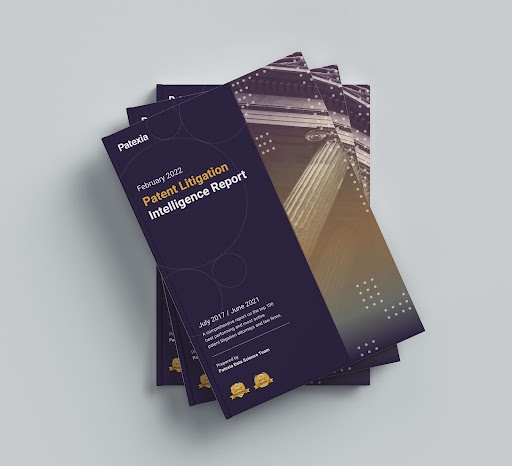Patexia Insight 124: 60% of District Court Patent Cases are Terminated within 6 Months
Last Thursday we released our second annual Patent Litigation Intelligence Report where we analyzed the patent litigation activity for a 4-year period from July 1, 2017, through June 30, 2021. We provided high-level statistics for 14,506 district court patent cases that were filed during this period, including the rankings of all parties, their representatives and judges. This week we are going to focus on the outcome of all these cases as well as the pace of progress.
During the period of study, there were a total of 12,116 patent cases that had a termination status on PACER as of December 31, 2021. The remaining 2,390 out of all the 14,506 cases were still pending as of December 31st. As we were analyzing these cases and reviewing their outcomes for ranking purposes, we realized that a majority of cases had been terminated within a year.
On average, a district court patent case was terminated in 212 days, but this includes a small percentage of cases (i.e., outliers) that took a very long time. For example, there were 53 cases that took more than three years to complete. This anomaly had a large impact on the average and the full picture. In the following bar chart we have grouped terminated cases by the time from filing to termination.

Close to 83% of all cases are terminated in less than 12 months while only about 8 percent of the cases (954) take more than 18 months. Looking closer, 60% of the cases are finalized within the first 6 months from the filing date. To better understand the reasons behind their early termination, we decided to further focus on those terminated in less than 6 months.
The following pie chart shows the PACER status for all 7300 patent cases terminated in less than 6 months (180 days) from their filing.

As expected, the chart shows that 83% of patent cases that are terminated within the first six months, are dismissed for one reason or another. Transfers are the second largest category with 8.6% and judgment decisions account for only 3.2% of these cases. This was expected as trials take time and they cannot happen very quickly.
We further analyzed all terminated cases for the period of the study. There were a total of 20 different outcomes reported by PACER. The following bar chart shows the status as of December 31, 2021 for all 12,116 terminated cases as well as their associated number of unique patents:

Of the 12,116 terminated patent cases 9,643 or 79.6%, have a dismissal status for different reasons including settlements. 837 out of 12,116 or 6.9% went to a judgment of some kind. Plaintiffs often aim for a quick, short trial that potentially ends with a settlement. This not only results in a big portion of cases ending up in dismissal due to the settlement agreements, but also shortens the average time needed for a patent litigation case in a district court.
Once the case is filed, things do not always go as planned. Defendants draw different strategies on how to approach the infringement lawsuits and this may sometimes mean filing an IPR, transferring the case, etc.
When it comes to the 6.9% judgment outcomes, the litigation often takes much longer. Our data shows that on average 837 cases that received a judgement of some sort took 393 days. Since judges influence the pace by scheduling dates and different deadlines, this makes some judges and districts favored more than others as previously covered in Patexia Insight 123.
The remaining 1,636 or 13.5% of the total cases were either statistical/non-reportable closings or transfers. The high number of transfers (1088) shows that a venue transfer that is considered in the early stages of the process by the defendant is very popular and it may affect the overall outcome.

The full Patent Litigation Intelligence Report covers several other key statistics of patent litigation as well as providing the full rankings for all parties and their representatives (attorneys and law firms) in the 14,506 district court cases. Stay tuned as we plan to publish some of the best performing and most active attorneys, law firms and companies in the coming weeks.